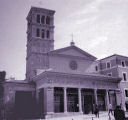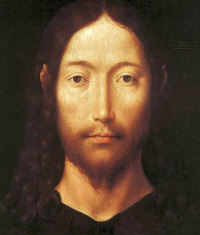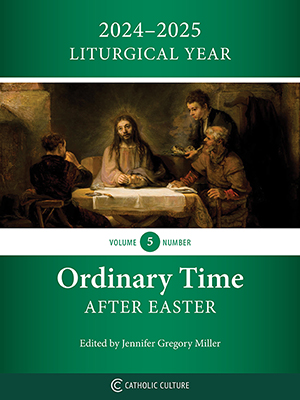Make your gift today!
Help keep Catholics around the world educated and informed.
Already donated? Log in to stop seeing these donation pop-ups.
Lent: March 6th
Thursday after Ash Wednesday
Other Commemorations: St. Colette, Virgin and Religious (RM)
» Enjoy our Liturgical Seasons series of e-books!
The ashes are scarcely washed clean from our foreheads. In this second Lenten Mass we get down to work on our spiritual program. The first four Masses in Lent are a unit. They describe the area of concentration and the dimensions of our Lenten program. Today’s Mass teaches that it is the soul’s life we are concerned with. The Opening Prayer at Mass is the usual one said when beginning a major work.
The Roman Martyrology commemorates St. Colette (1381-1447), who revived the Franciscan spirit among the Poor Clares. Her reform spread throughout France, Savoy, Germany, and Flanders, many convents being restored and seventeen new ones founded by her. She helped St. Vincent Ferrer in the work of healing the papal schism.
Meditation for Thursday after Ash Wednesday—Our Ascetic Duty
We disciples of the school of the Gospel have a new and overwhelming reason that calls us to ascetic duty. We are sinners, at least potentially; we must forestall or atone for our faults. We must expiate our shortcomings; we must punish the existing or renascent disorder in our being devastated by original and actual sin; we need some redeeming penalty.
Finally we have the obligation and the desire to follow in the footsteps of our Master, who said: “If any man would come after me, let him deny himself and take up his cross and follow me (Matt 16:24). The imitation of Christ: what a program!
Now we will merely reread to you a quotation from the ancient and great Origen; here it is: “Do you want me to show you again what fasting you must practice? Fast (that is, abstain) from all sin.” This is the fasting that pleases God.
—Pope St. Paul VI, April 4, 1973
Meditation on the Gospel, Luke 9:22-25:
Jesus is not content with demonstrating the eschatological necessity of his own suffering. He has prepared his followers too to accept, in the same spirit, a life of trial. In order to emphasize this teaching, Luke makes a somewhat artificial collection of Jesus’ sayings.
The verbs renounce, take up the cross, follow Christ are really synonymous. Each in its own way indicates what is the essential element of Christian life. In that he himself anticipates the punishment of the cross for his revolutionary ideas, Jesus is warning his followers that, if they remain loyal to his teaching, they must expect the same fate. Consequently one must reject all personal security and accept the mastery’s counsels (the rabbinic meaning of “following someone”) not only in theory but in practical life (“carrying the cross”).
In this context saving one’s life means abandoning Christ’s group of followers, deciding that it is dangerously revolutionary and looking for safety. Losing one’s life means risking life by remaining part of the group. The risk can only be undertaken in complete solidarity with the person of Jesus (“for my sake”).
If this solidarity is maintained throughout ones earthly life, it will be rewarded by an active share in Christ’s resurrection and his eschatological kingdom. It is thus that the paschal mystery is fulfilled for every Christian. This experience in death and resurrection becomes the lot of all his disciples. they in turn carry their cross so that they may live in glory with him.
—Guide for the Christian Assembly, Thierry Maertens and Jean Frisque
Highlights and Things to Do:
- Discuss the idea of forgiveness with your children — emphasizing with today's Gospel that Christ's forgiveness is limitless to those who humbly repent of their offenses against Him. Ask them ways in which they practice this virtue every day, with their sisters and brothers, with their parents, and with their friends.
- Throughout this fourth week of Lent, often the time when children begin to lose focus or weary of this penitential season, give them something tangible to work on, such as a Lenten Scrapbook, an ongoing activity that will engage their minds and stretch their creativity in putting their faith into pictures.

Thursday after Ash Wednesday
Station with San Giorgio in Velabro (St. George at Velabrum):
Today's station church is dedicated to St. George, the ever-popular soldier-saint. Pope St. Gregory established a diaconia, an institution that cared for the poor, at the site of this church. The area has a special place in the history of Rome, as an ancient tradition claims that it was here that Romulus killed his brother Remus before founding the city.
For more on San Giorgio in Velabro, see:
- Churches of Rome Info
- The Station Churches of Rome
- Rome Art Lover
- Roman Churches
- PNAC
- Aleteia
- Father Coulter Station Churches
- The Catholic Traveler
For further information on the Station Churches, see The Stational Church.
St. Colette
 Born in 1380, Nicolette was named in honor of St. Nicholas of Myra. Her loving parents nicknamed her Colette from the time she was a baby. Colette's father was a carpenter at an abbey in Picardy. Quiet and hard-working, Colette was a big help to her mother with the housework. Her parents noticed the child's liking for prayer and her sensitive, loving nature.
Born in 1380, Nicolette was named in honor of St. Nicholas of Myra. Her loving parents nicknamed her Colette from the time she was a baby. Colette's father was a carpenter at an abbey in Picardy. Quiet and hard-working, Colette was a big help to her mother with the housework. Her parents noticed the child's liking for prayer and her sensitive, loving nature.
When Colette was seventeen, both her parents died. The young woman was placed under the care of the abbot at the monastery where her father had worked. She asked for and received a hut built next to the abbey church. Colette lived there. She spent her time praying and sacrificing for Jesus' Church. More and more people found out about this holy young woman. They went to see her and asked her advice about important problems. They knew that she was wise because she lived close to God. She received everybody with gentle kindness. After each visit, she would pray that her visitors would find peace of soul. Colette was a member of the Third Order of St. Francis. She knew that the religious order of women who followed St. Francis' lifestyle are the Poor Clares. They are named after St. Clare, their foundress, who was a follower of St. Francis. During Colette's time, the Poor Clares needed to go back to the original purpose of their order. St. Francis of Assisi appeared to Colette and asked her to reform the Poor Clares. She must have been surprised and afraid of such a difficult task. But she trusted in God's grace. Colette traveled to the Poor Clare convents. She helped the nuns become more poor and prayerful.
The Poor Clares were inspired by St. Colette's life. She had a great devotion to Jesus in the Eucharist. She also spent time frequently meditating on the passion and death of Jesus. She loved Jesus and her religious vocation very much.
Colette knew exactly when and where she was going to die. She died in one of her convents in Ghent, Flanders, in 1447. She was sixty-seven. Colette was proclaimed a saint by Pope Pius VI in 1807.
—Excerpted from Holy Spirit Interactive
Symbols and Representation: birds; lamb; woman being carried to heaven by an angel; woman delivering a soul from purgatory; Poor Clare nun holding a crucifix and a hook; Poor Clare nun visited by Saint Anne, Saint Francis of Assisi, and/or Saint Clare of Assisi in a vision; Poor Clare nun walking on a stream
Patronage: against eye disorders; against fever; against headaches; against infertility; against the death of parents; craftsmen; Poor Clares; servants; Corbie, France; Ghent, Belgium
Highlights and Things to Do:
- Read more about St. Colette:
- The Colettines are a reformed branch of the Poor Clares. See the Ty Mam Duw Poor Clare Colettine Community for an example of one of the communities.
- St. Colette's relics are at Monastère Sainte-Claire in Poligny, France.






